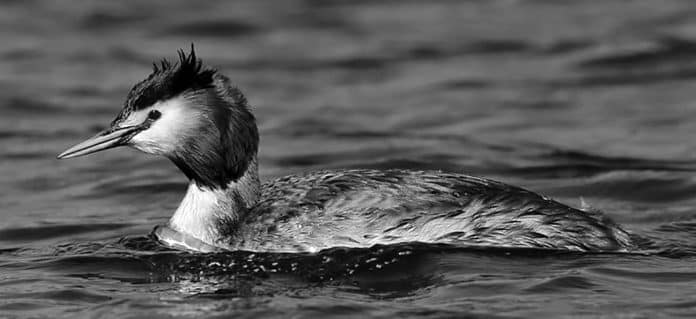Grebes in Tanzania: An Ornithologist’s Paradise Revealed
Tanzania is a country known for its diverse wildlife and stunning landscapes, but did you know that it is also home to several species of grebes? These small, diving waterbirds are a must-see for any ornithologist visiting Tanzania. In this article, we will explore the different species of grebes in Tanzania, their habitat and distribution, migration patterns, behavior and breeding habits, conservation efforts, best locations for birdwatching, tips for observing and photographing, and recommended resources for learning more about these fascinating birds.
Introduction to Grebes in Tanzania
Grebes are a family of aquatic birds that are found all over the world. They are known for their unique ability to dive underwater and swim with their wings. In Tanzania, there are three species of grebes that can be found: the Little Grebe, the Great Crested Grebe, and the Black-necked Grebe. These birds are small, but they are known for their beautiful plumage and unique behaviors.
Species of Grebes Found in Tanzania
The Little Grebe is the smallest of the grebes found in Tanzania. They are about the size of a small duck and have a brownish-black plumage. They are often found in small ponds and marshes and are known for their distinctive call, which sounds like a trill. The Great Crested Grebe is a larger species of grebe that is found in Tanzania. They have a striking black and white plumage and a distinctive crest on their head. They are often found in larger bodies of water, such as lakes and rivers. The Black-necked Grebe is a rare species of grebe that is found in Tanzania. They have a black neck and head and a white body. They are often found in deep freshwater lakes.
Habitat and Distribution of Grebes in Tanzania
Grebes are found in a variety of habitats in Tanzania, including lakes, rivers, ponds, and marshes. They are most commonly found in freshwater habitats, but they can also be found in saltwater habitats along the coast. The Little Grebe is the most widespread species of grebe in Tanzania and can be found in almost any freshwater habitat. The Great Crested Grebe is also quite common and can be found in larger bodies of freshwater. The Black-necked Grebe is the rarest of the three species and is only found in a few deep freshwater lakes in Tanzania.
Migration Patterns of Grebes in Tanzania
Grebes in Tanzania are migratory birds, which means that they move from one place to another depending on the season. The migration patterns of grebes in Tanzania are not well understood, but it is believed that they move to different habitats depending on the availability of food and breeding opportunities. Some grebes may migrate to other parts of Africa during the dry season when water levels are low, while others may stay in Tanzania year-round.
Behavior and Breeding Habits of Grebes in Tanzania
Grebes are known for their unique behaviors, such as their ability to dive underwater and swim with their wings. They are also known for their elaborate courtship displays, which involve synchronized swimming and head-bobbing. Grebes in Tanzania breed during the rainy season, which is usually from November to April. They build floating nests in the water and lay up to six eggs. Both parents take turns incubating the eggs and caring for the young.
Conservation Efforts for Grebes in Tanzania
Grebes in Tanzania are threatened by habitat loss and degradation, as well as pollution and hunting. The Little Grebe and the Great Crested Grebe are both listed as species of least concern by the International Union for Conservation of Nature (IUCN), but the Black-necked Grebe is listed as a vulnerable species. Conservation efforts for grebes in Tanzania include protecting their habitats and raising awareness about the importance of these birds.
Best Locations for Birdwatching Grebes in Tanzania

The best locations for birdwatching grebes in Tanzania are the freshwater lakes and wetlands in the northern and western parts of the country. Lake Victoria, Lake Manyara, and the Serengeti National Park are all great places to see grebes in their natural habitat. Birdwatching tours are available in many of these locations and can provide an excellent opportunity to see these birds up close.
Tips for Observing and Photographing Grebes in Tanzania
Observing and photographing grebes in Tanzania can be challenging, but there are a few tips that can help. First, it is important to be patient and observe the birds from a distance to avoid disturbing them. Second, it is best to use a telephoto lens to get a closer look without approaching too closely. Third, it is important to be respectful of the birds and their habitat by not littering or disturbing the environment.
Recommended Resources for Learning More about Grebes in Tanzania
If you are interested in learning more about grebes in Tanzania, there are several resources available. The Tanzania Bird Atlas is a great resource for birdwatchers and provides information about the distribution and abundance of different bird species in Tanzania. The Tanzania Birding Website is also a useful resource and provides information about birdwatching tours and guides in Tanzania.
Conclusion: Why Grebes in Tanzania are a Must-See for Ornithologists
Grebes in Tanzania are a fascinating group of birds that are well worth seeing for any ornithologist. They are known for their unique behaviors, beautiful plumage, and important role in the freshwater ecosystems of Tanzania. By understanding more about these birds and their habitat, we can work to protect them and ensure that they continue to thrive in Tanzania for years to come.
For more articles related to Wildlife in Tanzania (Animals), click here!


































